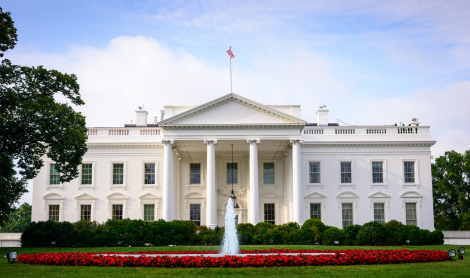Brandon Brown, CEO of The Mind Trust on CSP and Community-Driven Change
Indianapolis, Indiana is home to a diverse and growing community of public charter schools. Demand from families, especially families of color, has sustained this growth and helped inspire unique, community-centered models.
However, proposed changes to the Charter Schools Program (CSP) are set to stifle this education progress being informed by students, families, and educators.
Like many cities, Indianapolis faces educational inequities that can cause a lifetime of consequences for students of color and those experiencing poverty. Public charter schools in our city help students achieve more academic success than their peers in district-run schools, even out-performing wealthier, suburban schools. Thousands of students and families have the option to select a school based on their students’ needs, rather than being told where to go based on where they live.
The Indianapolis Mayor’s Office of Education Innovation has a rigorous charter school authorization process that takes community demand and need into account when deciding whether to allow a school to open or expand. If over-enrollment were a driving factor in Indianapolis when the Mayor’s Office began authorizing schools in 2001, students would not have benefited from the high-quality options they have today since the city’s largest public school district has experienced enrollment declines for decades.
In the 2021-2022 school year, more than 50% of families in Indianapolis Public School (IPS) district boundaries chose to send their student to a public charter school: 84% of students whose families choose charter schools are students of color; 77% of public charter school students in Indianapolis qualify for federal free or reduced lunch.
The CSP has provided much-needed start-up funding for the creation of life-changing charter schools in Indianapolis. However, the proposed changes to the CSP will give Washington bureaucrats more say in local educational decisions than Black, Latino, low-income, and other historically marginalized families.
The Biden administration and legislative leaders should follow President Obama’s lead in retaining the flexibility for local authorizers to make nuanced decisions in evaluating the needs of their communities and stay away from imposing limits on culturally affirming schools.
The proposed CSP provisions around measuring local need and demand removes the important discretion of authorizers to determine what can work best for their communities. These restrictions also imply that a public charter school has no place in an area with poor-performing, district-run schools if those schools are not “over-enrolled.” Simply put, this is a policy that would protect existing systems over the needs of students. To truly place students at the center of this decision would be to measure demand by whether or not a student has access to a high-quality school—period.
Fast forward to today: IPS enrollment is increasing due to the growth of charter school partnerships—called Innovation Network Schools—within the district. More than 40% of IPS students attend an Innovation Network School during the 2021-22 school year. More students now attend IPS than at any point in over a decade, and this enrollment growth has been driven exclusively by the growth of Innovation Network Schools. Breakthroughs like this are only possible when local leaders can make decisions based on the unique context of their communities.
Another heartening local trend is the growth of schools led and founded by leaders of color. A majority of students who live within IPS boundaries identify as Black or Latino. The founders and leadership teams of schools like BELIEVE Circle City High School, Rooted School Indianapolis, and Global Preparatory Academy are mostly Black and Latino educators. Studies show that all students benefit when they have teachers and school administrators of color. Underrepresented students and families benefit when the people leading their school understand their language and culture and share a similar background.
Proposed CSP provisions still allow any school to apply but put an emphasis on “integrated” schools. For instance, the application would ask leaders to ensure their school would not otherwise increase racial or socio-economic segregation or isolation. However, some of the most “racially diverse” schools in the Indianapolis region are home to the state’s largest academic racial disparities; indeed, classrooms housing advanced courses in “integrated schools” are often some of the most racially segregated places in Indianapolis. Given this reality, students from marginalized backgrounds should have the ability to choose culturally affirming schools.
President Biden and legislative leaders have the opportunity to continue a bipartisan tradition of supporting community-driven proposals to create new, life-changing schools in historically marginalized communities. On which side of history will our federal leaders stand? Will they create barriers to community-driven transformational change or will they stand with children and families?
Brandon Brown
CEO, The Mind Trust


